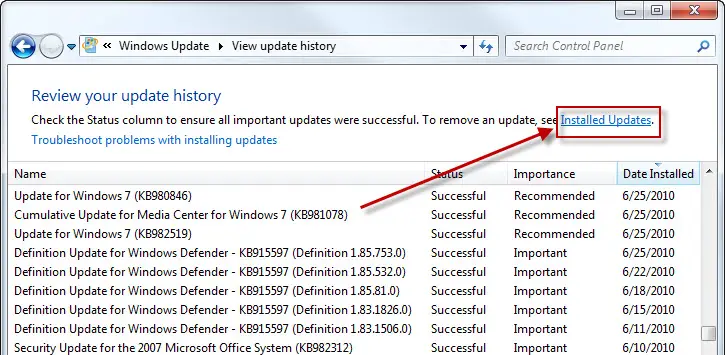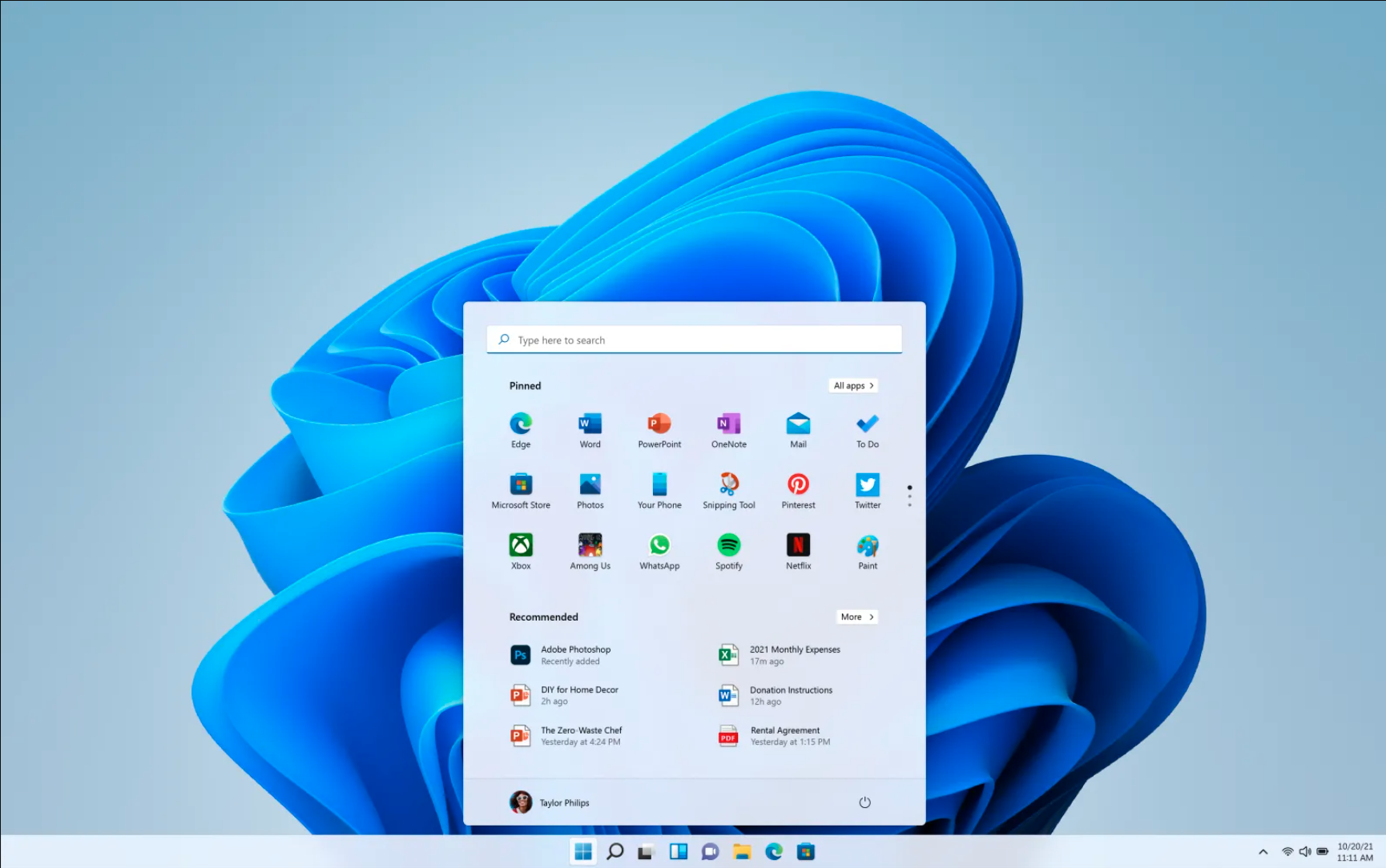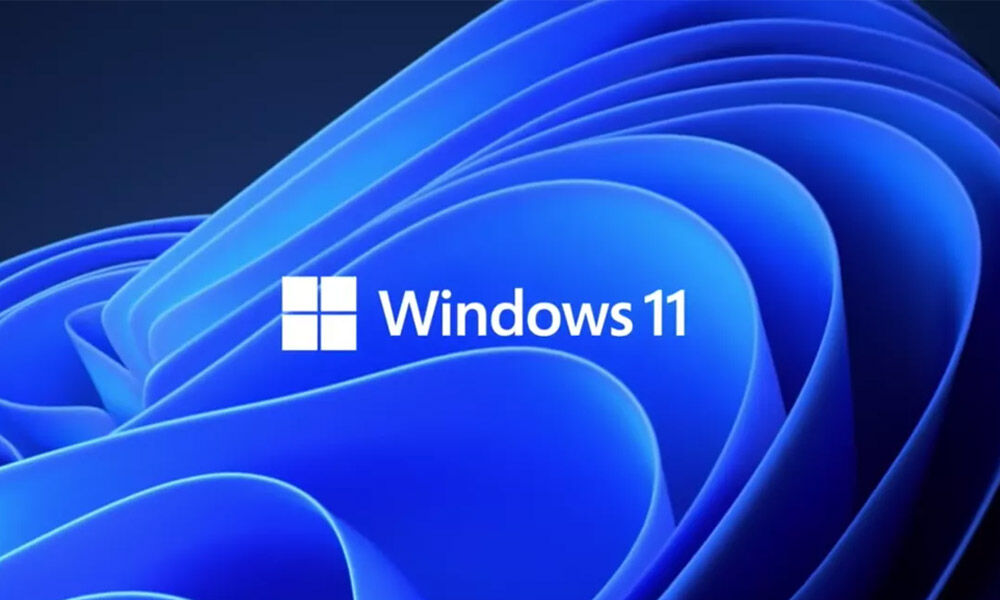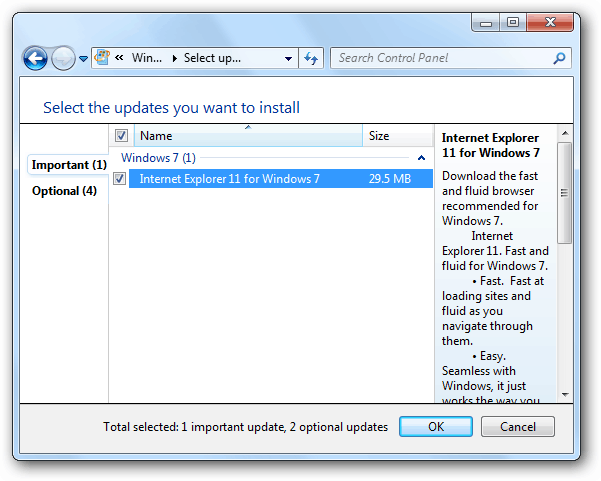If your existing Windows 10 PC is running Windows 10 20H1 or later and meets the minimum hardware specifications it will be able to upgrade to Windows 11. The upgrade rollout plan is still being finalized, but for most devices already in use today, we expect it to be ready sometime in early 2022. Not all Windows 10 PCs that are eligible to upgrade will be offered to upgrade at the same time. To see if your PC is eligible to upgrade, refer to the specifications here. Once the upgrade rollout has started, you can check if it is ready for your device by going to Settings/Windows Updates. Similar to how end users are notified when updates are available in Windows 10, end users will see an indication in the notification areas of the taskbar in the bottom right, that the upgrade is available.
More information on how that is presented will be available at a later date. Additional desktop notification options may be also be added at a later date. Microsoft finally launched Windows 11 earlier this week, proving that the operating system update isn't what many feared — a Windows 10 paint job. Windows 11 comes with a new user interface that puts the start menu front and center, which is the kind of visual transformation that would qualify as a Windows 10 theme makeover.
But Windows 11 also brings over various new features that users will be excited about. Warren noted that he rarely used the Widgets panel or Microsoft Teams, citing that he preferred the weather display that later versions of Windows 10 offered, and didn't use Teams to communicate with his friends and family. He also acknowledged the expansion of Microsoft Store to include more "traditional" desktop applications. Overall, he concluded that "I wouldn't rush out to upgrade to Windows 11, but I also wouldn't avoid it. After all, Windows 11 still feels familiar and underneath all the UI changes, it's the same Windows we've had for decades."
Windows 11 requires modern hardware to run, but if your PC has a CPU released in the last 3-4 years, you're probably in luck. To provide enhanced security to its users, Microsoft is requiring all PCs to feature a specialized chip called a Trusted Platform Module, or TPM, of at least version 2.0. This chip is found in most modern CPUs and also many motherboards. Computers built before 2017 may not be compatible, however, so it's important to take a close look at the minimum system requirements before opting into an upgrade.
Microsoft has temporarily disabled its PC Health Check tool to update it for the Windows 11 release, but it promises to advise you of any compatibility issues you may be facing ahead of the upgrade. If your existing Windows 10 PC is running the most current version of Windows 10 and meets the minimum hardware specifications it will be able to upgrade to Windows 11. Not all Windows 10 PCs that are eligible to upgrade to Windows 11 will be offered to upgrade at the same time. Cunningham concluded that "as I've dug into and learned its ins and outs for this review, I've warmed to it more", but argued that the OS was facing similar "public perception" issues to Windows Vista and Windows 8.
Windows 11 will be available for download, once the final version releases to consumers later this year, via Windows Update on the PCs. Much in the same way Windows 10 updates arrive right now, and you may most likely find Windows 11 in due course, listed in the optional updates list. The system firmware needs to be UEFI and Secure Boot capable, while the graphics card, whether integrated or discreet, needs to be compatible with DirectX 12 or later.
Computing devices with screen sizes smaller than 9-inches and resolution less than 720p will not be compatible with Windows 11.These are the larger system requirements that need to be ticked off. In October 2019, Microsoft announced "Windows 10X", a future edition of Windows 10 designed exclusively for dual-touchscreen devices such as the then-upcoming Surface Neo. Legacy Windows applications would also be required to run in "containers" to ensure performance and power optimization. Microsoft stated that it planned to release Windows 10X devices by the end of 2020. Microsoft has already confirmed that it will start rolling out Windows 11 preview builds of Windows 11 to users in the Windows Insider programme next week.
But to download Windows 11, you will first need to check if your computer has a 64-bit processor, 4GB RAM and 64GB storage. Basically, Microsoft has changed the minimum requirements needed to run Windows 11. You can find the minimum specifications required for the update by opening the PC health app, which is a free download from Microsoft. Unless you crave the cutting edge, it's okay to wait on upgrading for now. Windows updates are exciting and it can be tempting to be on the ground floor for any major technology release. Bugs can happen, sometimes big ones that can leave you rolling back to a previous operating system version.
More frequently, you'll find that certain features just aren't finished yet and the experience isn't as polished as it will eventually become. You'll be one of the first to experience those exciting new features but it often demands more patience as they continue to be developed. Windows 11 brings a number of enhancements to Windows users, including a new look, multitasking enhancements, improved gaming performance, Android app support, and more. Aesthetically, it will have a new, frosted glass look, and a reworked start menu, now known as the Dock, optimized for touch input on the latest devices.
Users will be able to rearrange windows into new arrangements, like a 4x4 grid, using Snap Layouts that can then be saved into Snap Groups and recalled later. The desktop will also be enhanced with the addition of Windows Widgets, an AI-driven feed of updates based on your interests and daily tasks, including daily calendar updates, traffic, weather, sports, and more. Original equipment manufacturers can still ship computers without a TPM 2.0 coprocessor upon Microsoft's approval. Some third-party software may refuse to run on unsupported configurations of Windows 11. A redesigned user interface is present frequently throughout the operating system, building upon Fluent Design System; translucency, shadows, a new color palette, and rounded geometry are prevalent throughout the UI.
Internet Explorer has been replaced by the Chromium-based Microsoft Edge as the default web browser, and Microsoft Teams is integrated into the Windows shell. Microsoft also announced plans to allow more flexibility in software that can be distributed via Microsoft Store, and to support Android apps on Windows 11 . If you are having a brand new laptop or PC, then your system must be compatible with Windows 11 or even might come with it preinstalled.
But issues may arise with the older versions of PCs, as its hardware might not match with the requirements of Windows 11. If your PC has a 7th gen or previous Intel CPU, then it is unsupported by the latest upgrade. Still, you can migrate to Windows 11, but the way is a little more complicated as you will need to download install files, then perform a clean install and then restore the program and data files. With its machine learning technology, Microsoft has determined further devices on which the Windows 11 update prompt should now appear automatically. The Redmond-based software company has not revealed any additional information on which exact PC configurations are included in this third group.
However, manually triggering the Windows 11 update, which is how many tech enthusiasts probably installed Windows 11 in the past weeks, is no longer necessary on these PCs. Users can simply check the regular Windows Update application in order to verify whether the Windows 11 upgrade is ready to download on their respective device. If your computer meets the minimum requirements to run Windows 11, you can sign up for the Windows Insider Program today and download the update today. If you'd rather wait for the official release, which will also be free for eligible Windows 10 users, the only thing to do at this point is wait.
Once it's available, you'll either be able to download directly through the Windows Update tool or as a standalone download from Microsoft. As we mention above, if you do decide to try the preview version, be sure to back up your computer and prepare to encounter a few bugs in this early release. Windows 11 is now available as a free upgrade for computers already running Windows 10 that meet the minimum system requirements, and it is also available pre-installed on many branded devices. However, the rollout will be phased and controlled to provide a good upgrade experience, which means that it'll take months before the new version reaches every device.
Microsoft has officially unveiled Windows 11, their brand-new OS for PC, and the good news is that it will be a free upgrade for all Windows 10 users - much like how Windows 10 was for Windows 7 and 8 users. For productivity, the operating system will now feature native Microsoft Teams integration. Microsoft says this will make it easier to connect with friends and colleagues across devices by adding Teams functionality right into the start menu and taskbar.
If you use Windows on a laptop with an external display, Windows 11 will also remember the position of windows on that screen when disconnected and will restore them once it's plugged back in. It's not imperative that you upgrade your system to Windows in the next couple of weeks, or even months. According to Microsoft's own lifecycle website, Windows 10 Home, Pro and Enterprise editions will continue to be supported by Microsoft until October 2025; your device will get essential security updates for another four years. For many people, that's about the time to upgrade to a newer device, one that will come with Windows 11 already installed. If the Microsoft Surface family of products isn't your style though, other brands like Dell, Asus and HP have all released pages online that specify what devices are Windows 11 ready.
Note that many won't come with the new operating system installed, but as they all meet the minimum system requirements, you can simply buy the laptop or 2-in-1 as normal and then update it yourself. Windows 11 has higher technical requirements than Windows 10, is possible to install Windows 11 on devices that don't meet the minimum requirements. Upgrading unsupported hardware to Windows 11 will require you to install the update manually using an ISO. There is a different set of minimum minimum requirements your PC will have to meet including 4GB of RAM, 64GB of storage space, and two-core 64-bit 1 GHz processor. According to Microsoft, if users have these specifications, they can try out many Windows 11 tools with the developer's program.
This includes a revamped Start, Taskbar, and Action Centre experience as well as a new Microsoft Store app, redesigned settings, lock screen, File Explorer and more. Also warned that some features may not work, and the user may have to face unknown issues. As an update, Microsoft will no longer include Cortana in the taskbar and the Internet Explorer browser in Windows 11 Update.
Apart from this, S Mode is now available only for Windows 11 Home Edition. Perhaps the most important thing to know about the release of Windows 11 is that we should expect it to change significantly over the next few years. I've been using beta versions of Windows 11 for a month in the lead-up to writing this review, and it seems like every few days there's a minor new feature or redesigned app to check out. We may not see that feature fully realized in Windows until next year. Citing security considerations, the system requirements for Windows 11 were increased over Windows 10. While the OS can be installed on unsupported processors, Microsoft does not guarantee the availability of updates.
Windows 11 also drops support for 32-bit x86 CPUs and devices which use BIOS firmware. Microsoft has yet released an official statement regarding the pricing of Windows, or whether it will be a free upgrade like the previous versions were free updates for license holders. However, as per an article by Android Authority, Windows 11 will most likely be a free upgrade for individuals using Windows 10 or Windows 8 with valid licenses.
The Windows 11 free upgrade will be installed onto your computer/laptop just like any other Windows update, without any hassle or manual updation required. The article by Android Authority also states that all of your personal user data and settings will be preserved in the update and will be applied to the Windows 11 update. Windows 11 download will be available once Microsoft released the update publicly. Windows 11 will be provided as a free update to all eligible devices that are currently running Windows 10. Eligibility for automatic upgrade is based on certain minimum hardware requirements. If you have a computer with unsupported hardware, you should not try to upgrade to Windows 11.
Although there are workarounds to bypass the TPM 2.0 and other checks, if you manage to install version 21H2, the device will state in an unsupported state. According to Microsoft, devices are likely to experience more crashes, you won't get the support of any kind, and updates are not guaranteed. That said, if you're feeling adventurous or wait until Microsoft officially releases Windows 11 to the public, this new OS has a lot of interesting features that are poised to genuinely change your computing experience. Snap Layouts should offer better multitasking support, especially on large or ultrawide monitors. DirectStorage can offer big reductions to load times for gamers.
Android app support opens a whole new app ecosystem up to Windows users. Only time will tell if Windows 11 proves to be as popular as Windows 10, but it seems like Microsoft is providing compelling reasons to sign up for the update when the time is right for you. If you haven't seen it through Windows Update yet, you can still get the final build through the Beta and Release Preview channels of the Windows Insider Program, as long as you have a compatible PC.
The Dev channel is already running rs_prerelease builds to test out new features, so be careful with that. If you enroll in the Dev channel, you'll have to do a clean installation of Windows 11 to roll back. And of course, you can also get it on a bunch of new laptops and desktops like the Surface Laptop Studio and Surface Pro 8. Windows 11 SE was announced on November 9, 2021, as an edition exclusively for low-end devices sold in the education market, and a successor to Windows 10 S. It is bundled with applications such as Microsoft Office for Microsoft 365, Minecraft Education Edition, and Flipgrid, while OneDrive is used to save files by default.
Windows 11 SE does not include Microsoft Store; third-party software is provisioned or installed by administrators. As part of the minimum system requirements, Windows 11 only runs on devices with a Trusted Platform Module 2.0 security coprocessor. According to Microsoft, the TPM 2.0 coprocessor is a "critical building block" for protection against firmware and hardware attacks.
In addition, Microsoft now requires devices with Windows 11 to include virtualization-based security , hypervisor-protected code integrity , and Secure Boot built-in and enabled by default. The operating system also features hardware-enforced stack protection for supported Intel and AMD processors for protection against zero-day exploits. Microsoft makes you accept that the company can stop providing updates, and security patches to Windows 11 on these devices. While Microsoft is unlikely to do that in practice, it's still better to be on the safer side.
Also, you're likely to run into driver incompatibility issues on unsupported devices. Especially, if your computer is running hardware that is more than 5-6 years old. Most Windows 10 PCs currently being sold will be able to upgrade to New Windows. For the PC to be able to upgrade to New Windows, it must meet the minimum hardware specifications and specific hardware is required for some features found here.
The upgrade rollout plan is still being finalised but is scheduled to begin late in 2021 and continue into 2022. There is a way to install Windows 11 on unsupported hardware, but we wouldn't recommend it. Although Microsoft hasn't confirmed it, the company has heavily implied that unsupported users won't receive critical security updates. If you still want to install, you can do so using the Media Creation Tool, which bypasses hardware checks.
Tech enthusiasts have been waiting for a long time for the Windows 11 update. All the previous Windows versions were usually released with a gap of around 3 years, so the 6 years between Windows 10 and 11 was a long wait. However, Windows 10 was unlike previous Windows updates and Microsoft provided frequent large patches and updates to Windows 10 to keep it fresh and relevant. As per an announcement by Microsoft, Windows 11 be officially launched on June 24, 2021, about a week from now. While June 24 has been declared as the official launch date, it is unclear when the update will be made available for Windows users for download. Microsoft has recently announced the next major Windows update - Windows 11.
The current Windows 10 version has been running over the past 6 years since its launch. Tech enthusiasts had been waiting for a long time for any updates on the upcoming Windows version. Now that Microsoft has made the official announcement, many people are wondering whether the upcoming Windows update will be free or will people have to pay for the license.





























No comments:
Post a Comment
Note: Only a member of this blog may post a comment.